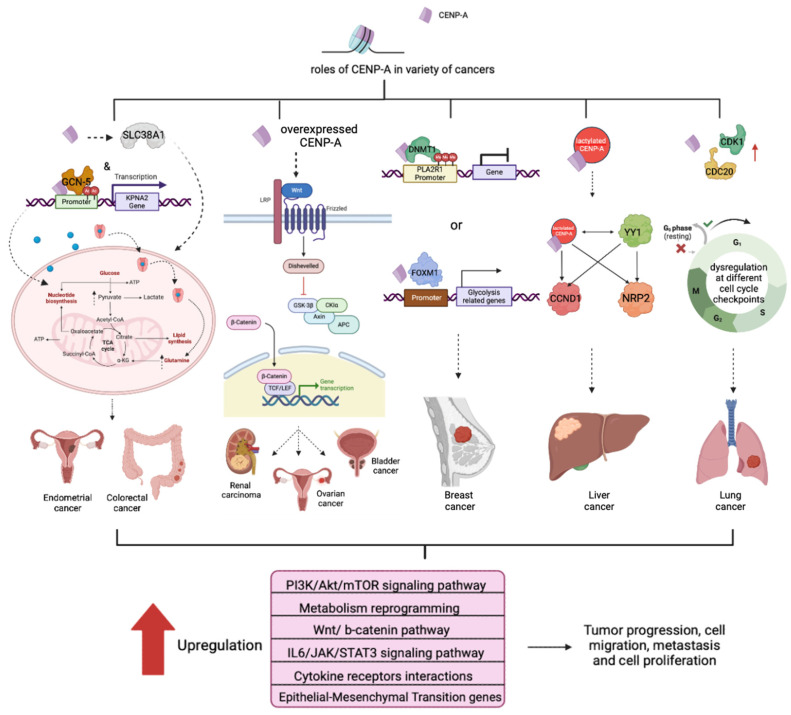Figure 4.
Schematic illustration showing how CENP-A plays a role in a broad variety of cancers. Overexpression of CENP-A is commonly observed, and it can work with CDC20 and CDK1 to help tumor cells escape from cell cycle checkpoints in lung adenocarcinoma. Modifications on CENP-A, such as lactylated, allow the cooperation with YY1 to produce CCND1 and NRP2 in HCC. In addition, CENP-A acts as a transcriptional regulator to enhance different gene expression in distinct cancers, including breast cancers, colorectal cancers and endometrial cancers that subsequently alter the metabolism reprogramming. Furthermore, CENP-A overexpression is found to correlate with hyperactivation of a wide range of downstream signaling pathways, such as Wnt/β-catenin in ccRCC, ovarian cancers and prostate cancers. (Abbreviations: SLC38A1—Solute Carrier Family 38 member 1, CCND1—cyclin D1, NRP2—Neuropilin 2, KPNA2—Karyopherin α2 subunit, DNMT1—DNA Methyltransferase 1, PLA2R1—Phospholipase A2 Receptor, FOXM1—Factor Forkhead Box M1, CDK1—Cyclin-dependent kinase 1, CDC20—Cell division cycle protein 20).

